Rabbi Deborah Bodin Cohen
Deborah is Director of Congregational Learning at Congregation Har Shalom in Potomac, MD. Her winning lesson plan, “Confirmation: Joining the Legacy”, teaches students about the history of Confirmation.
Confirmation: Joining the Legacy
Through learning key aspects of the history of Confirmation, students will develop a sense of connection to past Confirmands, and thus see their Confirmation as connected to Jewish heritage.
Overview
Enduring Understandings
- Confirmation is an experience that Jewish youth today share with Jewish youth from the early 19th century forward, and this connects current youth to their past
- We are part of a larger historical narrative that predates and will outlast us
- The Confirmation ritual has changed and developed over time
Essential Questions
- What is Confirmation and how has this tradition developed since its inception in the early 19th century?
- What is the role of the individual and individuality in the scope of Jewish tradition and the larger historical narrative?
- What does Confirmation mean to you in the context of your own Jewish journey?
Notes to Teacher
- The full unit consists of four lessons (correlating to Parts 1-4 in the lesson plan below), each of which can be taught in sessions of an hour over the course of four classes
- Some possible supplemental activities::
- Have artistic students in the class design a Confirmation certificate for your class to use, both based on the historic examples and also the class conversations about Confirmation customs
- Create a song for the Confirmation service based on the class pledge, the Hannah DeSoto reading , or the members of the German Confirmation class who had to flee from the Nazis soon after their Confirmation (see “Document Studies” below for both the DeSoto piece and the information about the German Confirmation class)
- Write an introductory piece about the history of the Confirmation to go with the reflection pieces
- Create the program book for Confirmation, including artistically displaying the reflection pieces
- If your class likes to debate, here are some suggested topics:
- Borrowing the concept of Confirmation from Christian examples does not lessen its significance as a Jewish ritual
- The addition of Confirmation was a reasonable compromise between advocates and critics of allowing girls to become Bat Mitzvah
- The age of Confirmation has gradually increased. B’nai Mitzvah should also take place at an older age
- Explanation of symbolism in Photographs 1-4
- White dresses: Confirmation is seen as a time of purity and new beginnings. It is also connected to Shavuot, symbolically viewed as the marriage of God and the Jewish people.
- Flowers: Confirmation is connected to Shavuot, which occurs in the Spring and celebrates the barley harvest. Flowers remind us of the harvest. In addition, according to Midrash, Mt. Sinai was covered with flowers when Moses received the Torah.
- More girls than boys: Confirmation started before Bat Mitzvah ceremonies began. Part of the impetus for creating the new ritual of Confirmation was giving girls the opportunity to study Judaism and to have a coming–of–age ceremony.
- American Flag: Confirmation was originally borrowed from Christian tradition. In some respects, it began as a way to “fit in” with Christian neighbors.
- Variety of Ages: Confirmation began as a ceremony done closer to age 13, as it was seen as a substitution for Bar Mitzvah. The age of Confirmation varied between congregations and communities, but gradually increased to the later teen years.
- Information on Henrietta Szold’s Confirmation program
- German: Half of the program is written in German. Confirmation originated in Germany in the early 1800s and was brought to America by German Reform Jews. Henrietta Szold’s program indicates a community and a tradition in flux.
- Shavuot: This Confirmation took place on Shavuot, which is the most traditional time for Confirmation, although not the only time. Ask the students: Why might Confirmation be connected to Shavuot? Answers: Shavuot falls near the end of the school year. Shavuot celebrates God giving the Torah and the Jewish people accepting the Torah. Confirmands make a pledge to accept Torah and Jewish life as their own. Shavuot, unlike the other pilgrimage holidays of Sukkot and Passover, has fewer customs and rituals associated with it.
- Shabuoth versus Shavuot: This is a great time for a side observation about the development of Hebrew. In Henrietta Szold’s time, Jews of German and Eastern European descent read Hebrew with the Ashkenazi pronunciation (Shabuoth) but, with the founding of the State of Israel, the Sephardi pronunciation (Shavuot) became the dominant for all Jews.
- Hanover Street Temple: Oheb Shalom’s original building was located on Hanover Street in Baltimore, near the current Baltimore Orioles Camden Yards stadium. It was a custom, at that time, to refer to synagogue buildings by their street location.

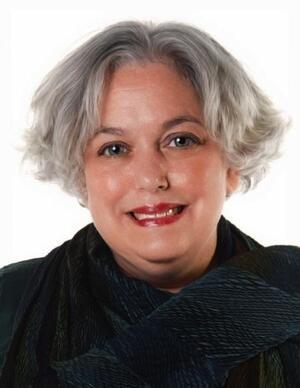
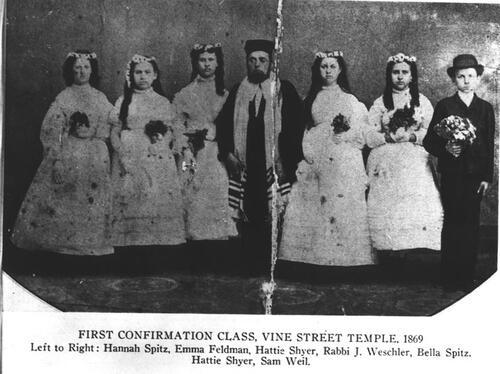
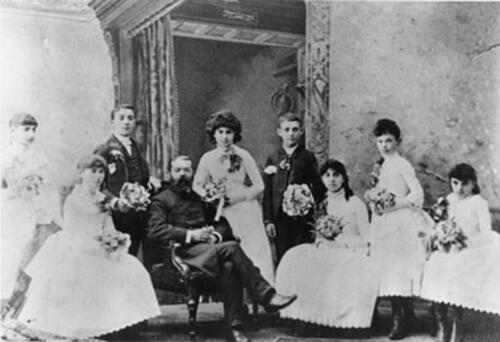
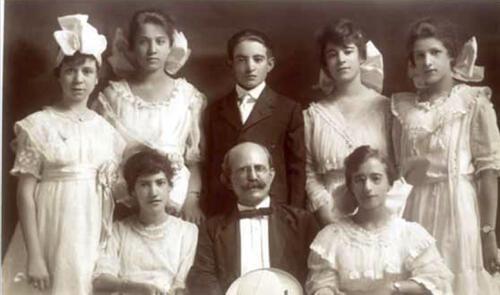
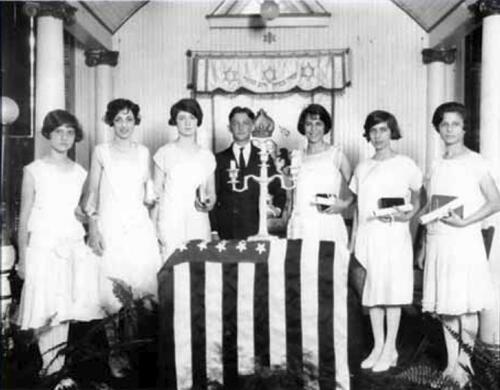
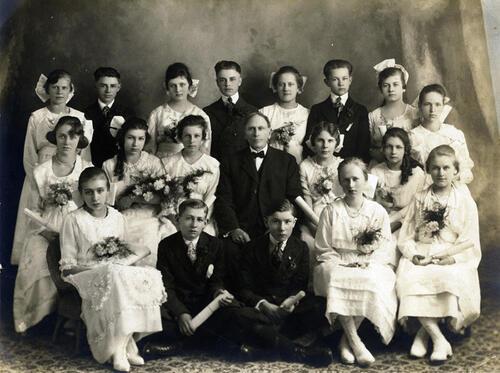

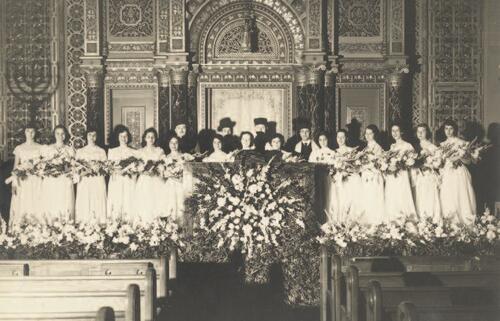
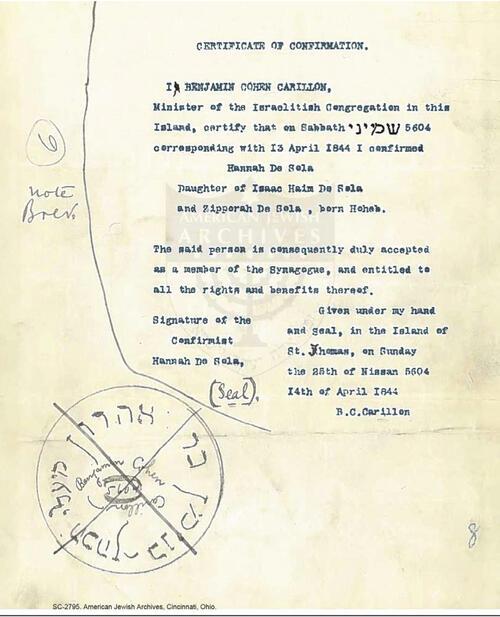

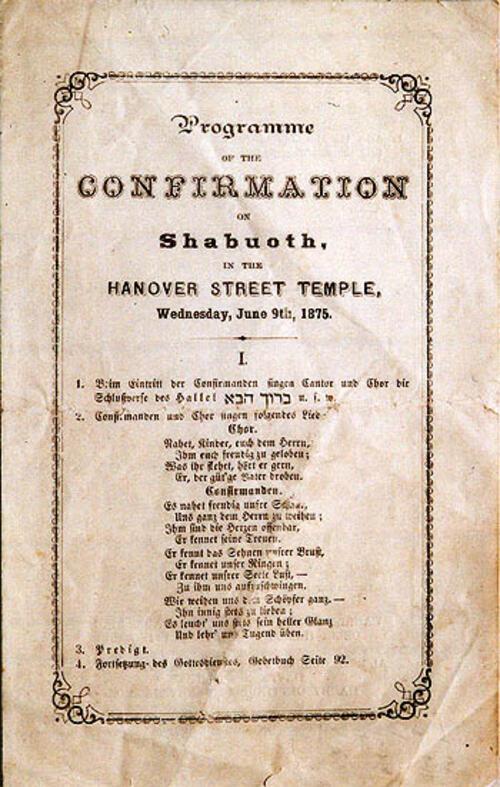


Mazel Tov